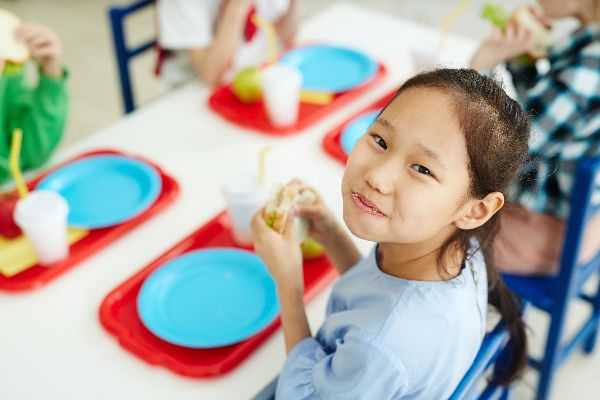There are 13 million children in America who don’t know where their next meal will come from. Throughout the school year, many participate in programs that provide them with breakfast and lunch at a reduced or no cost. But what happens during summer break?
Food banks also face their greatest need for donations during the summertime. Families with children who had been receiving free or reduced-cost breakfast and/or lunch at school need to find a way to replace those meals during summer break - so they turn to their local food bank or pantry for assistance.
Childhood Hunger During the School Year
During the school year, The National School Lunch Program and the School Breakfast Program provide nutritional assistance to millions of low-income children every year.
Breakfast is considered one of the most important meals of the day. It’s also been found that students with access to the School Breakfast Program, on average, have a lower body mass index. To ensure each child is able to start their day off right and with food in their stomach, the School Breakfast Program was created and serves more than 15.5 million children each day.
In 2019, more than 29 million children participated in the National School Lunch Program (NSLP), making it “the nation’s second-largest food and nutrition assistance program behind SNAP.” That number dropped to 22.6 million in 2020 due to school closings because of the pandemic, but the need was actually higher than ever. COVID-19 exacerbated food insecurity in the United States, with 18% of households with children reporting food insecurity in 2020 compared to 15% of households in 2019.

These programs have been proven to reduce food insecurity, offer a number of health benefits, and improve academic performance.
It’s important to note that while these school food programs serve around 30 million children each school year, not all of these children are considered food insecure. Children that live in households with income below 185% of the poverty line are considered eligible for reduced or no cost lunches. While these 30 million children may be considered low-income, only about 9 million are categorized as food insecure.
Childhood Hunger During the Summer
Without access to daily meals through their schools, millions of children are forced to go hungry during the summer. Studies show that food insecure children had a harder time at school compared to those who had consistent meals. The Summer Food Service Program was designed to ensure that the assistance low-income children receive at school isn’t interrupted when classes aren’t in session. Of the 29 million children that participate in the NSLP, only about 5 million children continue to do so during the summer months.
The lack of participation in the summer meal programs has many variables - many families don’t know the programs exist or don’t know how to access them. Another obstacle is transportation to and from the locations. Young children with working parents can’t walk through high-traffic areas or dangerous neighborhoods alone. In rural communities, the distance may simply be too far to travel.
To combat summer hunger, the USDA funded the Summer Service Program, which enables local organizations to establish summer meal delivery sites to provide meals to food insecure children. The summer meal programs are typically located at schools, parks, community centers, housing projects, etc. Yet, the programs only reach about 16% of the children who need it.
The infrastructure to help keep kids fed during the summer is there, but the success of these programs depends on us. When they aren’t operating as well as they could be, it places a greater burden on hunger relief organizations that are already stretched to their limits.
What can we do?
There are multiple things we can do to ensure childhood hunger is at a minimum. We need to do our part to keep the shelves at our local food banks and pantries stocked. Hosting a food drive is always important, but the impact is so much greater throughout the summer.
If you’re part of a school or organization that can sponsor a site for the Summer Food Service Program, you can learn more and sign up here.
We also need to strengthen our federal nutrition programs. The National School Lunch Program, the School Breakfast Program, the Summer Food Service Program, WIC, and SNAP safeguard our children from the dangers of hunger and poverty. We all need to advocate for and support these life-saving programs.
Hunger doesn’t take a summer break, and neither can we. Don’t wait, donate today to support those in need.
